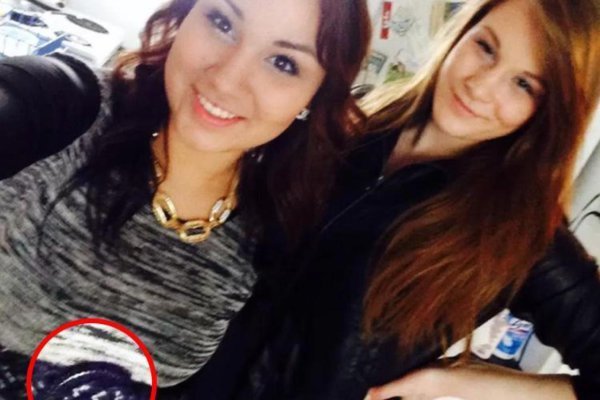Sorella’s daughters — Amanda, 9, and Sabrina, 8 — were found dead on March 31, 2009, inside the family’s home in Laval.
Adele Sorella has been found guilty of second-degree murder in the deaths of her two daughters.
The jury had been deliberating since Wednesday, tasked with reaching a verdict on the five options Superior Court Justice Sophie Bourque gave them in her final instructions earlier that day.
Sorella, 52, had been charged with the first-degree murders of her daughters, but Bourque had also given the jury the options of finding her guilty of second-degree murder or manslaughter or of finding her not guilty or not criminally responsible by reason of a mental disorder.
A second-degree murder conviction carries an automatic life sentence, with the possibility of parole after at least 10 years. However, Crown prosecutor Nektarios Tzortzinas said shortly after the verdict that his team will consider their options.
Sorella’s daughters — Amanda, 9, and Sabrina, 8 — died on March 31, 2009, inside the family’s home in Laval. Their bodies were discovered by Sorella’s mother and her two brothers. There were no signs of violence on the bodies and the police initially believed they had been poisoned. When that was ruled out, the focus of the investigation turned toward a hyperbaric chamber that had been purchased to treat Sabrina’s juvenile rheumatoid arthritis.
Sorella was arrested the next day, after her car crashed into a utility pole in another part of Laval.
During the trial, Sorella was represented by brothers Pierre and Guy Poupart and the Crown was represented by prosecutors Tzortzinas and Simon Lapierre.
The Crown was unable to produce any witnesses who were present when the girls died. The crux of their theory came from Caroline Tanguay, a pathologist who testified that the most likely cause of death was that the girls were somehow kept in the sealed hyperbaric chamber until they died from a lack of oxygen.
When she testified in her defence, Sorella said the chamber was purchased by her husband while he was on the lam to avoid arrest in Project Colisée, a Combined Forces Special Enforcement Unit investigation that resulted in the 2006 arrests of six Montreal Mafia leaders, and dozens of their associates. Husband Giuseppe (Ponytail) De Vito had conspired with members of the Rizzuto organization to smuggle more than 200 kilograms of cocaine in through Pierre Elliott Trudeau International Airport.
In 2010, police found De Vito living in St-Léonard, where he was living with another woman. He was later convicted on drug smuggling and drug trafficking charges and was serving an 11-year sentence when he died of cyanide poisoning on July 8, 2013, while incarcerated at a maximum-security penitentiary near Quebec City.
Sorella told the jury that while he was on the lam, De Vito had a friend install the chamber inside her home, to replace an older model, without her permission and against her will. She also said she had no idea how the newer model worked and that she never used it.
Tanguay testified that if Amanda and Sabrina somehow remained in the sealed chamber long enough, and no oxygen was supplied to it, they would have died gradually from a lack of oxygen, wherein the victim loses consciousness before dying. The jury was told that oxygen levels inside a sealed chamber, like the one found in Sorella’s home, would have become critically low after 90 minutes.
The trial presided over by Bourque was the second time Sorella was tried on charges she murdered her daughters.
Jury selection in the first trial, held before Superior Court Justice Carol Cohen, began on April 22, 2013 and it came to an end on June 24, 2013. In that case, the jury took more than three days to convict Sorella on two counts of first-degree murder.
Sorella appealed, and on Dec. 4, 2017, three Quebec Court of Appeal judges unanimously agreed to quash the verdicts and ordered a new trial. Sorella’s lawyers successfully argued that Cohen had made errors in her instructions to the jury before they began deliberating.
A major difference between the first trial and the second was that Sorella testified in her defence in the second one. She told the jury she could not recall the day when her daughters died. She said her closest recollection was when people approached her car after it crashed.
Her testimony appeared to change the defence’s strategy from the first trial. Unlike in the first trial, Pierre Poupart called psychiatrist Gilles Chamberland as a defence witness. He said there was little doubt that Sorella was suffering from a “major depression” at the time her daughters died and that she was in a state of disassociation. Chamberland also said that, because of the state she was in at the time, Sorella could not tell right from wrong.













